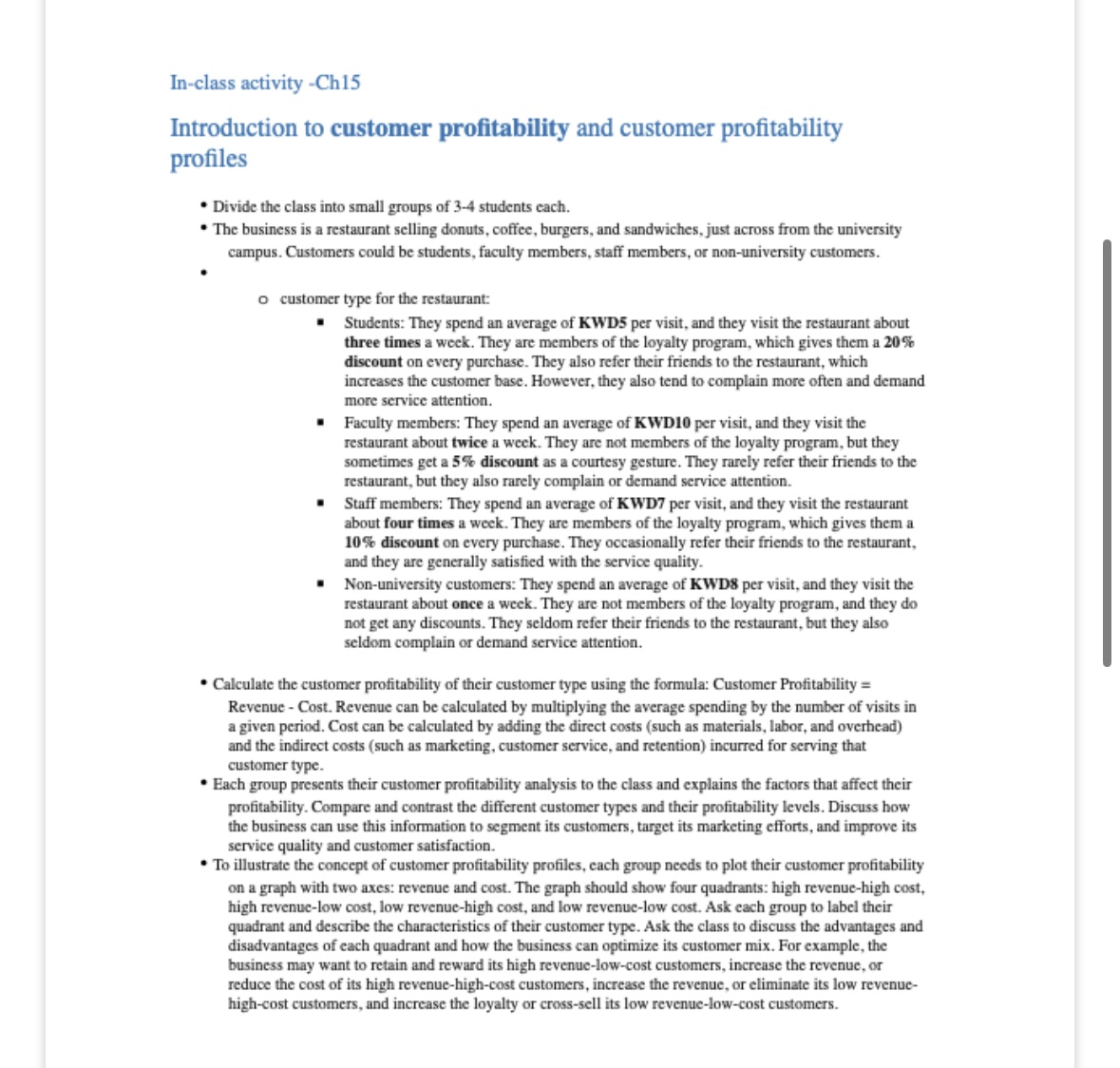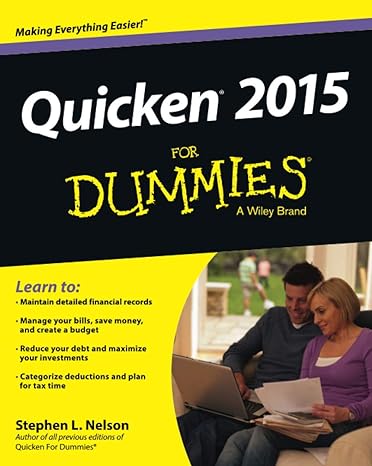The answer should be in excel sheet
So just paste the excel sheet and I will copy what you write please.
 Based on the in-class activity for ch.15 submit your worksheet. That should include at least the answer for the following question: Calculate the customer profitability of their customer type using the formula: Customer Profitability = Revenue - Cost. Revenue can be calculated by multiplying the average spending by the number of visits in a given period. Cost can be calculated by adding the direct costs (such as materials, labor, and overhead) and the indirect costs (such as marketing, customer service, and retention) incurred for serving that customer type.
Based on the in-class activity for ch.15 submit your worksheet. That should include at least the answer for the following question: Calculate the customer profitability of their customer type using the formula: Customer Profitability = Revenue - Cost. Revenue can be calculated by multiplying the average spending by the number of visits in a given period. Cost can be calculated by adding the direct costs (such as materials, labor, and overhead) and the indirect costs (such as marketing, customer service, and retention) incurred for serving that customer type.
In-class activity -Ch15 Introduction to customer profitability and customer profitability profiles - Divide the class into small groups of 3-4 students each. - The business is a restaurant selling donuts, coffee, burgers, and sandwiches, just across from the university campus. Customers could be students, faculty members, staff members, or non-university customers. customer type for the restaurant: - Students: They spend an average of KWD5 per visit, and they visit the restaurant about three times a week. They are members of the loyalty program, which gives them a 20% discount on every purchase. They also refer their friends to the restaurant, which increases the customer base. However, they also tend to complain more often and demand more service attention. - Faculty members: They spend an average of KWD10 per visit, and they visit the restaurant about twice a week. They are not members of the loyalty program, but they sometimes get a 5% discount as a courtesy gesture. They rarely refer their friends to the restaurant, but they also rarely complain or demand service attention. - Staff members: They spend an average of KWD7 per visit, and they visit the restaurant about four times a week. They are members of the loyalty program, which gives them a 10% discount on every purchase. They occasionally refer their friends to the restaurant, and they are generally satisfied with the service quality. - Non-university customers: They spend an average of KWD8 per visit, and they visit the restaurant about once a week. They are not members of the loyalty program, and they do not get any discounts. They seldom refer their friends to the restaurant, but they also seldom complain or demand service attention. - Calculate the customer profitability of their customer type using the formula: Customer Profitability = Revenue - Cost. Revenue can be calculated by multiplying the average spending by the number of visits in a given period. Cost can be calculated by adding the direct costs (such as materials, labor, and overhead) and the indirect costs (such as marketing, customer service, and retention) incurred for serving that customer type. - Each group presents their customer profitability analysis to the class and explains the factors that affect their profitability. Compare and contrast the different customer types and their profitability levels. Discuss how the business can use this information to segment its customers, target its marketing efforts, and improve its service quality and customer satisfaction. - To illustrate the concept of customer profitability profiles, each group needs to plot their customer profitability on a graph with two axes: revenue and cost. The graph should show four quadrants: high revenue-high cost, high revenue-low cost, low revenue-high cost, and low revenue-low cost. Ask each group to label their quadrant and describe the characteristics of their customer type. Ask the class to discuss the advantages and disadvantages of each quadrant and how the business can optimize its customer mix. For example, the business may want to retain and reward its high revenue-low-cost customers, increase the revenue, or reduce the cost of its high revenue-high-cost customers, increase the revenue, or eliminate its low revenuehigh-cost customers, and increase the loyalty or cross-sell its low revenue-low-cost customers
 Based on the in-class activity for ch.15 submit your worksheet. That should include at least the answer for the following question: Calculate the customer profitability of their customer type using the formula: Customer Profitability = Revenue - Cost. Revenue can be calculated by multiplying the average spending by the number of visits in a given period. Cost can be calculated by adding the direct costs (such as materials, labor, and overhead) and the indirect costs (such as marketing, customer service, and retention) incurred for serving that customer type.
Based on the in-class activity for ch.15 submit your worksheet. That should include at least the answer for the following question: Calculate the customer profitability of their customer type using the formula: Customer Profitability = Revenue - Cost. Revenue can be calculated by multiplying the average spending by the number of visits in a given period. Cost can be calculated by adding the direct costs (such as materials, labor, and overhead) and the indirect costs (such as marketing, customer service, and retention) incurred for serving that customer type.





